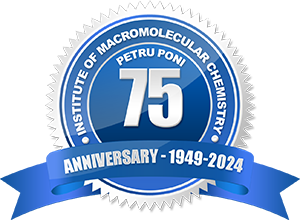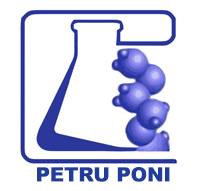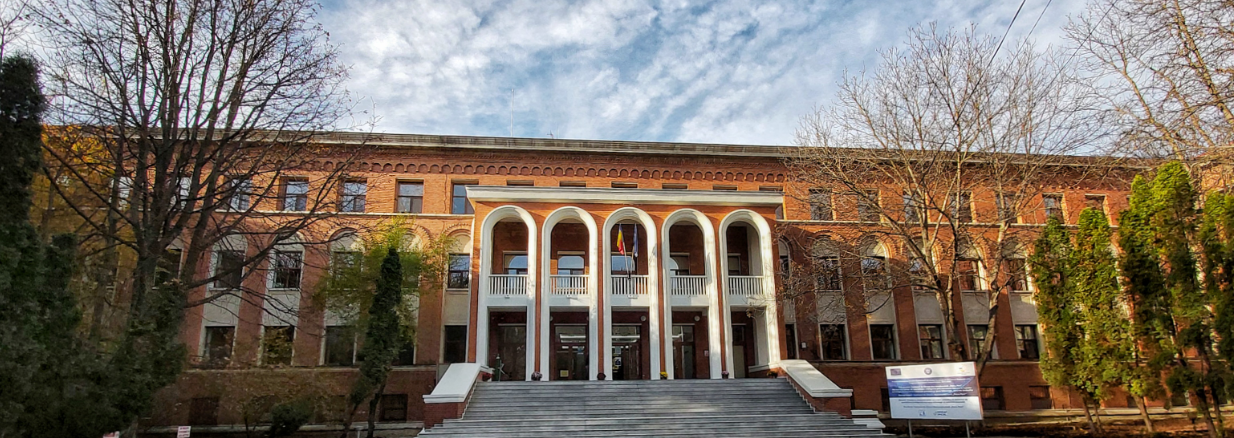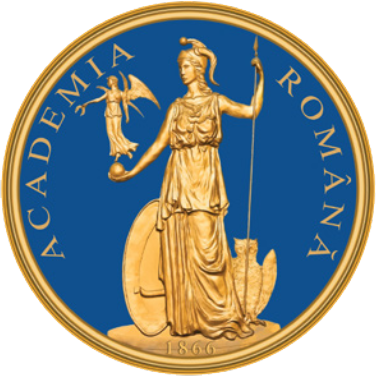|
|
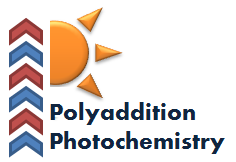 | Laboratory 2. Polyaddition and Photochemistry |
| Head of laboratory: Dr. Sergiu COȘERI |
|
|
| Project: PHOTOSENSITIZED HYBRID COATINGS BASED ON POLYURETHANE MATRICES AND METAL OXIDE NANOPARTICLES WITH TAILORABLE PHOTOCATALYTIC FEATURES |
Project code: PN-III-P4-PCE-2021-0933
Acronym: PHYCOMAT
Project manager: Dr. Violeta Melinte
Duration: 2022-2024 - Ongoing
The project aims to develop competitive photoactive hybrid composite coatings based on functionalized metal oxides/polyurethane elastomers in order to produce versatile photocatalysts with enhanced efficiency in the photodegradation of environmentally harmful pollutants, and especially, to extend their photoresponse towards visible light domain.
The main objective of the proposal is to extend our research topics towards the development of flexible nanocomposite coatings based on polyurethane elastomers bearing on the same macromolecular chain fluorescent sequences along with covalently linked inorganic nanoparticles.
The scientific goal of the proposal will be achieved by combining different synthesis techniques (preparation and functionalization of metal oxide nanoparticles, synthesis of photoactive monomers and polyurethanes, assembly of hybrid composites), the use of various characterization methods and photocatalysis competences, in order to develop viable nanocomposites with optical properties adapted for the efficient removal of environmental contaminants. The convenient coupling between the inorganic nanoparticles and the organic chromophores is expected to promote charge separation and a better suppression of electron-hole pair recombination, extending the catalytic activity to visible light. Also, an advantage of immobilizing the catalysts into the polymeric supports is the effortless recycling, without a significant loss of the photocatalytic potential.
https://icmpp.ro/projects/l2/about.php?id=51 |
|
| Project: NOVEL CONCEPTUALIZATION OF DOUBLE-NETWORK INJECTABLE HYDROGELS, FROM NATURALLY OCCURRING POLYMERS |
Project code: PN-III-P1-1.1-TE-2021-0597
Acronym: NOVAHY
Project manager: Dr. Gabriela Biliuta
Duration: 2022-2024 - Ongoing
Polysaccharides, like cellulose, are by far the largest amount of all polymers produced in the world. Fully biodegradable, they are made by Nature. They are the sustainable polymeric materials of tomorrow, when synthetic polymers coming from oil will become expensive and rare. A much advanced knowledge (around structure, derivatization, and control of processing) of the polysaccharides in all their basic aspects will bring a lot of new possibilities to obtain new polymers, soft materials, cellular structures and composites from renewable materials. Oxidation of cellulose is one of the most important modification methods to prepare value-added cellulose derivatives for further applications. Mild oxidation of polysaccharides affords ketones, carbonyl and carboxyl groups, which readily condense to in situ forming hydrogels with amine-containing polymers. This type of imine-crosslinked hydrogel displays several interesting and practically valuable properties including injectability, self-healing, tunable moduli, and ability to respond to multiple types of stimulus, so that these are promising materials for biomedical applications. In this project, we propose to synthesis a serial of injectable hydrogels from oxidized polysaccharides and gelatin using two-step process. The addition of polysaccharides to gelatin is advantageous in mimicking the ECM, which largely contains proteoglycans or glycoproteins.
The main goal of the project is to design, synthesize and develop self-healing injectable hydrogels based on polysaccharides, with photoresponsive properties.
https://icmpp.ro/projects/l2/about.php?id=47 |
|
| Project: BIO-BASED POLYMER COATINGS WITH RE-MENDABLE THERMO-RESPONSIVE PROPERTIES |
Project code: PN-III-P1-1.1-PD-2021-0513
Acronym: ReMendBioCoat
Project manager: Dr. Oana URSACHE
Duration: 2022-2024 - Ongoing
Lately, there is a great interest to replace synthetic polymers with natural ones in many applications. In addition, the increasing use of renewable materials is considered to be one of the key issues which contribute to a sustainable development. Consequently, functional materials with unique properties have been obtained from renewable resources, such as polysaccharides and vegetable oils, using their intrinsic features. For example, to design polysaccharide-based materials with improved mechanical and thermal features the cross-linking approach has been adopted. Moreover, re-mendable cross-linked polymers are able to heal after mechanical damage.
In this context, the main goal of this project is to design bio-based coatings applying the cross-linking strategy through Diels-Alder cycloaddtions. In particular, furyl modified polysaccharides and maleimido castor oil functionalized derivatives will be synthesized and used to prepare coatings with re-mendable thermo-responsive properties.
https://icmpp.ro/projects/l2/about.php?id=53 |
|
| Project: DESIGN OF NOVEL 3D ARCHITECTURES WITH CONTROLLED ANTI-FREEZING AND CONDUCTIVE PROPERTIES |
Project code: PN-III-P1-1.1-PD-2021-0462
Acronym: 3D-AntiFCO
Project manager: Dr. Raluca-Ioana BARON
Duration: 2022-2024 - Ongoing
The choice of raw materials plays a crucial role in the preparation of multifunctional hydrogels. Although synthetic polymers are widely used in the design of hydrogel-based materials, they have many drawbacks, being non-renewable, expensive and difficult to biodegrade, and thus diminishing the hydrogel applications.
In this context, this project goals to develop multifunctional hydrogels based on cellulose, a sustainable and renewable, biocompatible and biodegradable raw material, being also one of the most widespread biopolymers on Earth. In addition, to overcome the shortcomings of conventional hydrogels (low mechanical strength as well as the use of toxic cross-linking agents), an experimental strategy involving partial replacement of water in hydrogels with organic agents such as glycerol or ethylene glycol will be developed and applied. By incorporating magnetic fluids (MFs) into the cellulose-based matrix, new types of conductive hydrogels with potential applications at extreme temperatures are aimed to be obtained.
https://icmpp.ro/projects/l2/about.php?id=46 |
|
| Project: EXPANDING CELLULOSE’S BOUNDARIES TOWARDS THE FABRICATION OF SUPERIOR PROTON CONDUCTIVE MEMBRANES FOR FUEL CELLS |
Project code: PN-III-P4-ID-PCE-2020-0476
Acronym: EXCELLFUEL
Project manager: Dr. Sergiu COȘERI
Duration: 2021-2023 - Ended
The project propose a new approach to construct proton conductive membranes based on a cheap, abundant, and renewable resource, based on cellulose. The strategy involves firstly, selective oxidation and functionalization of cellulose, in order to increase its versatility, by introduction high amounts of carboxylic groups, able to serve as active sites of proton conductivity.
Besides, nanocellulose prepared from agricultural wastes will act as a redoubtable reinforcing agent as well as providing high proton conductivity. Moreover, this matrix will incorporate different nitrogen-containing heterocycles. These heterocycles are “dry” proton conducting ionomers which can substitute water because they form similar hydrogen bond networks as water. The complex interactions between the polymeric matrix (abundant in the COOH and OH groups) and the low molecular weight heterocyclic dopant, bearing nitrogen atoms and double bonds, create favorable prerequisites to realize new materials with conductive properties. The replacement of water by heterocycles should result in the cellulose based composites characterized by the conductivity in the intermediate temperature range (over 100 °C), under anhydrous conditions, desirable for various electrochemical devices, and are relevant in modern material science.
https://icmpp.ro/projects/l2/about.php?id=37 |
|
| Project: HIGHLY SENSITIVE IMMUNOASSAY DEVICE BASED ON NATURAL RESOURCE |
Project code: PN-III-P2-2.1-PED-2019-0169
Acronym: HISENSE
Project manager: Dr. Sergiu COȘERI
Duration: 2020-2022 - Ended
This research project proposes a new approach to fabricate highly sensitive biosensors to detect proteins. The strategy involves the activation of cellulose substrate, by a nanostructured engineering procedure to selectively introduce a high amount of carboxyl groups, followed by anchoring specific moieties which will eventually act as a triggering sites for the specific detection and immobilization of proteins. Two proteins were used as a model analyte to fabricate the immunosensor (i.e. human IgG, and bovine serum albumin). The proposed biosensor may exhibit a good specificity, stability, and reproducibility. Our strategy may pave a simple way to fabricate highly sensitive immunosensors for a wide range of applications
https://icmpp.ro/projects/l2/about.php?id=26 |
|
| Project: NEW BIO-BASED HYBRID COMPOSITES WITH CeO2 NPs: A STEP TOWARDS MORE SUSTAINABLE AND COMPETITIVE PHOTOCATALYTIC MATERIALS |
Project code: PN-III-P1-1.1-TE-2019-1245
Acronym: POLYCER
Project manager: Dr. Andreea Laura SCUTARU
Duration: 2020-2022 - Ended
The project is focused on the achieving of competitive hybrid composites starting from cellulose and nanoceria in order to provide advanced materials with excellent photocatalytic behaviour for the removal of organic pollutants, aiming the development of simple, green, economically feasible and efficient photocatalysts in the fulfil of contemporary environmental concerns.
From the scientific point of view, the goal is to prepare various hybrid composites starting from different native cellulose sorts (avicel, fibers, cotton linters, cellulose acetate), oxidized cellulose (by oxidation in environmentally friendly conditions) which contains carboxyl groups to ensure supplementary interactions with CeO2 NPs, and polymer blends of cellulose/oxidized cellulose with PVA to create intra- and intermolecular hydrogen bonding which lead to the enhancement of the photocatalytic performance.
A complementary work refers to the synthesis of CeO2 NPs by simple and green protocols (the co-precipitation method) and functionalization of CeO2 NPs with organic moieties (with terminal -NH2, -COOH groups) aiming to attain a covalent attachment of inorganic units to the cellulose materials, and a better dispersion within the organic matrix. Additionally, in the materials, noble metal nanoparticles (Ag, Au, Pd) will be generated to induce photocatalytic activity in the visible domain.
Final prepared nanocomposite materials will be thoroughly investigated with respect to the development of efficient photocatalysts for pollutants removal from water, highlighting the composites with the best photocatalytic and reusability performances.
https://icmpp.ro/projects/l2/about.php?id=17 |
|
| Project: DESIGN AND PREPARATION UNDER MILD "GREEN" CONDITIONS OF UV-CURED POLYMER - METAL/METAL OXIDE NANOPARTICLES HYBRID COATINGS WITH PREDICTABLE ANTIMICROBIAL OR SEALING FEATURES |
Project code: PN-III-P1-1.1-TE-2016-1390
Acronym: POLYMETCOAT
Project manager: Dr. Violeta MELINTE
Duration: 2018-2020 - Ended
The Project is focused on the achieving of competitive UV-cured polymer - metal nanoparticle hybrid coatings with predictable antimicrobial or sealing features through a one-pot synthesis approach in order to achieve simple, economically feasible and green nanomaterials with advanced properties. The project aimed to design and develop novel nanocomposites materials comprising mixtures of bimetallic or metal/metal oxide nanoparticles (0.5-10 wt. %) and photopolymerizable monomers prepared by UV/vis irradiation. Other target refers to the synthesis of new photopolymerizable (meth)acrylate monomers derived from renewable sources such as gelatin or vegetable oils-based materials to develop “green” coatings susceptible for further functionalization. Consequently, the proposed topic demands the synthesis of novel photoreactive monomers and oligomers functionalized with specific sequences, in situ preparation of metal nanoparticles (e.g. Ag-Au, Au-Cu or Ag-Cu) or their ex situ synthesis (TiO2, ZnO) followed by an appropriate functionalization, realization and characterization of hybrid nanocomposite coatings, as well as the testing of their applicability perspectives.
https://icmpp.ro/polymetcoat/ |
|
| Project: HYBRID COMPOSITES BASED ON DOPED ZNO MICRO-/NANOPARTICLES FOR ENHANCED UV AND VISIBLE LIGHT PHOTOCATALYSIS |
Project code: PN-III-P1-1.1-PD-2016-1718
Acronym: PhotoCAT
Project manager: Dr. Viorica-Elena PODAȘCĂ
Duration: 2018-2020 - Ended
The main objective of this project is the synthesis of some novel photocatalysts with high efficiency under UV and visible light, intended for waste water treatment by economical and time-efficient technology, using advanced materials incorporating inorganic micro-/nanoparticles. Following the successful application of ZnO-Ag nanocomposites in the photocatalytic decomposition of organic compounds found as pollutants in waste water, this new project will focus on the preparation of novel micro-/nanostructured materials with photocatalytic activity, containing ZnO-doped particles as fillers for new, as well as well-known, polymer matrices. The composites will be obtained via photochemical polymerization, and then thoroughly characterized as to establish their structure-properties relationships. Furthermore, these materials will be tested with regard to their suitability for use in the photochemical purification of waste water by initiating the photochemical degradation of dyes contained in the polluted water samples. A comparative study of the photochemical degradation rate of the dyes in the presence of these new photocatalysts under UV and visible light irradiation will also be undertaken.
https://icmpp.ro/photocat/index.php |
|
| Project: INNOVATIVE NANOTECHNOLOGIES BASED ON POLYMERS FOR NEW ADVANCED MATERIALS OBTAINING |
Project code: PN-III-P1-1.2-PCCDI-2017-0428
Acronym: NAPOLI19
Subproject manager: Dr. Tinca BURUIANĂ
Duration: 2018-2021 - Ended
Members in Project 2 (PC2): Eco-friendly nanostructured hybrid materials for surface protection against deterioration caused by microorganism and pollutants
Project 2 aims to produce smart coating materials that have advanced protection properties against the development of biofilms and deposit on surfaces such as stone, paper and metal. Metallic and/or inorganic nanoparticles coatings will be synthetized by sol–gel process using supercritical CO2, to achieve a minimal energy consumption and a manufacturing process with a low degree of pollution. Predictive models will be developed for antifungal and antibacterial properties, depending on the nature of nanoparticles that are included in the hybrid matrix. A series of tests will be carried out on the materials obtained, in order to validate biofilm prediction models with high biodegradability, under various environmental conditions.
Members in Project 3 (PC3): Biomaterials from aliphatic polyesters and micro- and nano-cellulosic modifiers for short-life and disposable products
This is a complex, multidisciplinary and innovative project, which aims to develop a new material, a bionanocomposite and a new synthesis method that can be easily scaled up. The biomaterial obtained within this project is intended for food or drugs packs, single-use medical instruments, medical sample storage containers, short-life or disposable products in large quantities that are difficult or impossible to recover. This project aims to replace petroleum-based polymers with recyclable polymers from renewable resources, to reduce the pollution caused by using plastic packaging.
https://icechim-rezultate.ro/proiect.php?id=36&lang=en |
|
|
